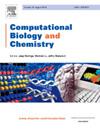DMNAG: Prediction of disease-metabolite associations based on Neighborhood Aggregation Graph Transformer
IF 2.6
4区 生物学
Q2 BIOLOGY
引用次数: 0
Abstract
The metabolic level within an organism typically reflects its health status. Studying the relationship between human diseases and metabolites helps enhance medical professionals’ ability for early disease diagnosis and risk prediction. However, traditional biological experimental methods often require substantial resources and manpower, and there is still room for improvement in the performance of existing predictive models. To tackle these, we propose a novel method based on the Neighborhood Aggregation Graph Transformer (NAGphormer) to predict potential associations between diseases and metabolites (DMNAG), aiming to provide guidance for biological experiments and improve experimental efficiency. First, we calculated the Gaussian kernel similarity of diseases and the physicochemical similarity of metabolites, and combined them with known associations to construct a bipartite heterogeneous network. We then calculated the semantic similarity of diseases and the Mol2vec similarity of metabolites, using them respectively as the similarity feature vectors for the disease nodes and metabolite nodes. Meanwhile, we calculate the positional information features of nodes and combine them with similarity features as the initial features of the nodes. Next, we input the bipartite heterogeneous network and node initial features into the Hop2Token module to capture multihop neighborhood information between nodes. Finally, we input the multi-hop features of nodes into the Transformer model for training and obtain the edge prediction probabilities through the decoder. Through experiments, our model achieved an AUC value of 0.9801 and an AUPR value of 0.9818 in five-fold cross-validation. In case studies, most DMNAG-predicted associations have been validated, showcasing the model’s reliability and superiority.

DMNAG:基于邻域聚集图转换器的疾病代谢物关联预测。
生物体内的代谢水平通常反映其健康状况。研究人类疾病与代谢物之间的关系,有助于提高医学工作者对疾病的早期诊断和风险预测能力。然而,传统的生物学实验方法往往需要大量的资源和人力,并且现有的预测模型的性能仍有改进的空间。为了解决这些问题,我们提出了一种基于邻域聚集图转换器(NAGphormer)的新方法来预测疾病与代谢物(DMNAG)之间的潜在关联,旨在为生物学实验提供指导,提高实验效率。首先,我们计算了疾病的高斯核相似度和代谢物的理化相似度,并将它们与已知的关联结合起来,构建了一个二部异构网络。然后计算疾病的语义相似度和代谢物的Mol2vec相似度,分别作为疾病节点和代谢物节点的相似特征向量。同时,计算节点的位置信息特征,并结合相似度特征作为节点的初始特征。接下来,我们将二部异构网络和节点初始特征输入到Hop2Token模块中,以捕获节点之间的多跳邻居信息。最后,我们将节点的多跳特征输入到Transformer模型中进行训练,并通过解码器获得边缘预测概率。通过实验,我们的模型经过五次交叉验证,AUC值为0.9801,AUPR值为0.9818。在案例研究中,大多数dmnag预测的关联已经得到验证,显示了模型的可靠性和优越性。
本文章由计算机程序翻译,如有差异,请以英文原文为准。
求助全文
约1分钟内获得全文
求助全文
来源期刊

Computational Biology and Chemistry
生物-计算机:跨学科应用
CiteScore
6.10
自引率
3.20%
发文量
142
审稿时长
24 days
期刊介绍:
Computational Biology and Chemistry publishes original research papers and review articles in all areas of computational life sciences. High quality research contributions with a major computational component in the areas of nucleic acid and protein sequence research, molecular evolution, molecular genetics (functional genomics and proteomics), theory and practice of either biology-specific or chemical-biology-specific modeling, and structural biology of nucleic acids and proteins are particularly welcome. Exceptionally high quality research work in bioinformatics, systems biology, ecology, computational pharmacology, metabolism, biomedical engineering, epidemiology, and statistical genetics will also be considered.
Given their inherent uncertainty, protein modeling and molecular docking studies should be thoroughly validated. In the absence of experimental results for validation, the use of molecular dynamics simulations along with detailed free energy calculations, for example, should be used as complementary techniques to support the major conclusions. Submissions of premature modeling exercises without additional biological insights will not be considered.
Review articles will generally be commissioned by the editors and should not be submitted to the journal without explicit invitation. However prospective authors are welcome to send a brief (one to three pages) synopsis, which will be evaluated by the editors.
 求助内容:
求助内容: 应助结果提醒方式:
应助结果提醒方式:


